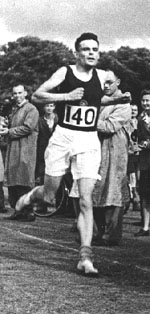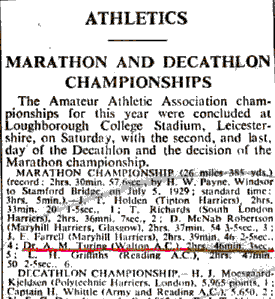2nd Anniversary of Decriminalising Archaic Law (Section 377 of IPC) : Remembering Alan Turing, the Victim of this Law.
This day, two years ago, 6th September 2018, a historic and an unprecedented judgment was unanimously passed by the the five member bench (including the CJI) of the Supreme Court of India, which decriminalised the archaic law - Section 377 of the Indian Penal Code. The hype and activism leading up to the judgment day was palpable and therefor it was not wonder that this judgment was covered in the media headlines in a sensation manner. “ INDEPENDENCE DAY - II” hailed the front page headlines of the Times of India. The significance of this judgement can be fathomed by contextualising its impact from the LGBT community - “not an aberration but a variation” (the words so astutely used by Justice Indu Malhotra) - points of view.
Section 377 of the Indian Penal Code was introduced in 1861, during the British rule in India. Like the British Buggery Act of 1533, section 377 made sexual activities "against the order of nature" illegal. This legislation was drafted by Thomas Macaulay around 1838 and it was brought into effect in 1860 in light of the ‘Sepoy Mutiny’ - the First War of Independence, 1857. The Section 377 of the IPC in British India was modelled on the Buggery Act 1533, which was enacted under the reign of King Henry VIII. This law defined ‘buggery’ as an unnatural sexual act against the will of God and man. It was only after seventy one years of the British leaving India and India attaining independence that this law was archived. Speaking of this law I am motivated to once again write about an extraordinary genius - Alan Turing - who had an innate connect with India. He was one of those who was at the receiving end of this archaic law. Alan Turing has an innate connect with India - his father served in India and so did his grand father - mother’s father.
Alan Mathison Turing, the World War II hero and a great mathematical genius and the father of modern computers, belonged to the LGBT community and was therefore at the receiving end of the Section 377. He committed suicide leaving behind the half eaten poison ridden apple behind. Innovative, forward thinking and brave in the face of prejudice, Alan Turing was an ‘enigma’ in his own life time. Science was an extra-curricular passion for Alan, which led him to become an undergraduate at King's College, Cambridge – and it was here that homosexuality became a definitive part of his identity.
Alan Turing’s sexual orientation haunted him all through his life. Not withstanding his WW II heroic contributions, he was publicly ostracised, castigated and put through the most insulting humiliation of chemical castration to avoid imprisonment. The genius Turing could not handle such humiliation and unfortunately took the extreme step of poisoning himself to death with cyanide on the 7th of June, 1954, at a very young age of just 42 years. It is however unclear whether he consumed cyanide laced apple by intent or by accident. The half eaten apple lying by the side of his dead body could not conclusively indicate the death was by intent or accident. However, the half eaten apple, which was lying by the side of his body, has gone down in history as the most valued brand in the form of an unwitting logo of Apple, the company which epitomises the vision of Turing. Whether Steve Jobs the Apple founder who was instrumental in introducing the famous logo for his company was guided by the incident of Turing’s death will also continue to be another ‘enigma’, a term which is inextricably linked to Alan Turing.
The Turing family including, Alan Turing, have had a historic linkage and tryst with India, the association of which dates back to the early 18th century. Several members of the Turing family, from Scotland, served the British empire in India and Robert Turing was perhaps the first to do so dating back to 1729. Alan Turing also had a very strong India connection. Alan’s father, Julius Turing, passed the Indian Civil Service (ICS) exams in 1896 and joined his duty at Madras (now Chennai) in the erstwhile Madras presidency. Alan’s mother, Ethel too has an Indian connection. Julius Turing, Alan’s father, married Ethel, his mother, in 1907. She was the daughter of Edward Waller Stoney, the chief engineer of the Madras Railway Company. Stoney, designed the Tungabhadra bridge, located in my state - the state of Karnataka - and wrote treatises on mountain railways and bridges. He made quite a fortune in India including building a bungalow at Coonoor near Ooty, which incidentally has been bought by Nandan Nilekani - the cofounder of Infosys and a key architect of the UID - Adhar.
Alan’s parents, Julius and Ethel spent a lot of their time in India, and their first son John was delivered at the Stoney bungalow. It is also believed that Ethel conceived Alan Turing in Orissa, then a part of Madras Presidency. She however, delivered the baby boy -Alan- in England on June 23, 1912.
Alan was a precocious child. He received his distinguished degree in 1934, which was followed by a Fellowship of King's College in 1935 and a Smith's Prize in 1936. He also spent two years at Princeton University enrolled as a graduate student. His remarkable talent came to the fore when British joined the war and Turing took up full-time work at the wartime cryptanalytic headquarters, Bletchley Park.
Turing was an extraordinarily genius mathematician who helped in cracking the enigmatic German codes. During World War II, Turing's work at Bletchley Park in Buckinghamshire helped Allied Forces to read secret German messages sent by their Enigma machines. For years, the efforts of thousands of codebreakers, working in small huts in the grounds of a large mansion somewhere in Buckinghamshire, was kept as one of the biggest secrets of the Second World War.
The modern day computers and a range of associated technologies and processing devices - that we are inextricably surrounded with - are operated by coded instructions. This cardinal principle, which we now take for granted, was a revolutionary contribution from Alan Turing. He introduced this abstract idea in his publication, “On Computable Numbers, with an Application to the Entscheidungsproblem” in the year 1936. Turing referred to these devices as 'computing machines'. However the American logician Alonzo Church called them the “Turing machines”. Alan’s publication pioneered the idea, which are essential to the modern computer—the concept of controlling computers and other computing machine's by means of a program of coded instructions stored in the machine's memory. This work had a profound influence on the development, in the 1940s, of the electronic stored-program digital computer. Most historians of computers often over look the contributions and influence of Alan in the early development of the electronic digital computers and credit only Neumann for this development.
The end of WW II enabled Turing to shift his focus on his other passion, long distance running. He developed his strength in cross-country running with frequent long distance training and top-rank competition in amateur athletics. He would shock his colleagues with his timing and often ran to his scientific meetings, arriving before his colleagues, who travelled by public transport. But for injury, he was a serious contender to be the part of the British team in the 1948 Olympic Games. He was never secretive about his sexual orientation. His outspokenness costed him dearly.
Turing was working at the University of Manchester when he developed a homosexual relationship with a 19 year old, Arnold Murray. Turing was arrested and was put to trial on March 31, 1952, after the police learned of his sexual relationship with the young Arnold. He was later prosecuted for homosexuality, a criminal offence in Britain. During sentencing, a judge offered Turing the choice of prison or “organo-therapy,” a type of chemical castration via estrogen injection that killed a man’s sex drive. He chose the later. Turing's conviction resulted in his loosing the security clearance and therefore he had to stop work at Britain’s Government Communications Headquarters (GCHQ), the post-war successor to Bletchley Park. All this played on the psyche of Turing and he became highly depressed and perhaps it was this depression, which led him to his death in 1954. A modest obituary spoke of Alan as a pioneer and a creator of the new electronic calculating machines. He liked long-distance running, chess and gardening, and nurtured an idea that “electrical computators” would one day “do something akin to thinking.” No one at that time could fathom the true nature of Turing’s life and genius.
Fast forward to 2020. Turing’s profound idea is now central to all modern day computers and other thinking devices, which have ushered us in to the “so called” era of “4th Industrial Revolution”. It is for this reason that we at the Nehru Science Centre have immortalised Alan Turing by crediting him to be the father of modern computers and artificial intelligence and have commissioned his statue in the centre of the “Machined to Think” gallery that provides a birds eye view in to the futuristic technologies that Alan envisaged, which include Robotics, Artificial Intelligence (AI), Virtual and Augmented Reality (VR and AR), the Internet of Things etcetera.
While we celebrate the second anniversary of the scrapping of the archaic Law - Section 377- by the honourable Supreme Court of India, let us spare a thought for Alan Turing and several other unheard of people who were at the receiving end of this most inhuman law. The homosexual Alan Turing, in flesh and blood, has gone but his unprecedented contributions to the field of artificial intelligence and computers, will continue to keep him alive through the machined to think devices and innumerable other Artificial Intelligence gadgets that have now become integral to our modern lives.
Long live Alan Turing.

















No comments:
Post a Comment